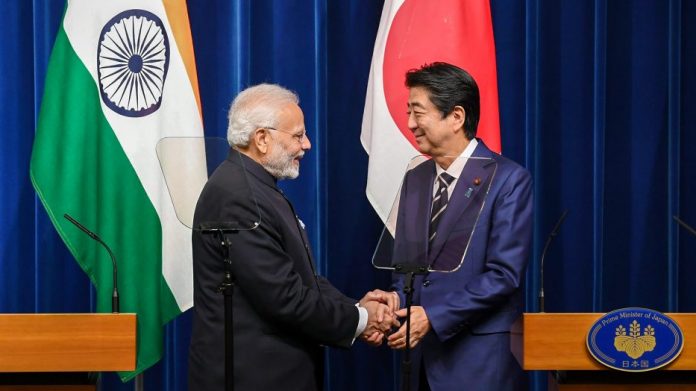
- 937Shares
Tokyo: India and Japan have decided to jointly foray into infrastructure development in other countries, with a focus on social welfare, Indian envoy to Japan Sanjay Kumar Verma told ThePrint.
“Today, ties between India and Japan have gone to such a level that both have a role to play in global architecture,” Verma said in an interview. “India and Japan will now be developing several projects in third countries. These will have lesser gestation period and long-term social impact.”
One such project entails the development of a port in Colombo, for which India and Japan have recently joined hands with Sri Lanka.
“Sri Lanka is located on a major maritime route and hence it is imperative to develop another port there. The talks have just begun and final modalities have to be finalised as per the needs of the Sri Lankan government,” Verma said, denying media reports that this will be an answer to Sri Lanka’s Hambantota Port that was developed by China.
Apart from Sri Lanka, India and Japan are also engaged in developing infrastructure for Bangladesh, Myanmar in the South Asian and Southeast Asian region and also in some African countries.
Mumbai-Ahmedabad high speed rail to meet 2020 deadline
According to Verma, the target of operating Mumbai-Ahmedabad high-speed rail by 2022 will be met, although it will be only at the level of “technological demonstration”, after which actual operations will begin.
The 508-km long Mumbai-Ahmedabad bullet train project that will be built at a cost of around $12 billion was officially inaugurated by Prime Minister Narendra Modi and his Japanese counterpart Shinzo Abe in September 2017. It is being built in India with Japanese ‘Shinkansen’ technology.
The project was announced in December 2015, and has been facing delays over acquisition of land.
“Yes there were delays in the initial period but a delay of three-four months is not significant considering the mammoth scale of the project,” Verma said. “Land acquisition is a key task and a large part of land has already been allocated for this.”
Abe to visit India later this year
Prime Minister Abe is expected to visit India as part of the annual India-Japan strategic dialogue that takes place alternately in New Delhi and Tokyo.
Abe, who visited India for the dialogue in 2017, is scheduled to arrive in New Delhi later this year. Both sides are expected to give a boost to innovation start-ups and will be exploring newer ventures in that, said Verma.
Both sides are also expected to also give a boost to the concept of ‘JAI’ or Japan-America-India, which was announced by Modi, Abe and US President Donald Trump on the sidelines of the G-20 Summit in Buenos Aires in order to shape the common strategic interests among them under the larger framework of the Indo-Pacific, Verma added.
He said that during Abe’s visit, India will also reiterate Prime Minister Modi’s SAGAR (Security and Growth for All in the Region). The concept, Verma said, has to be made broad-based by including the 10-member ASEAN (Association of Southeast Asian Nations) grouping in it.
Get the PrintEssential to make sense of the day's key developments
- 937Shares